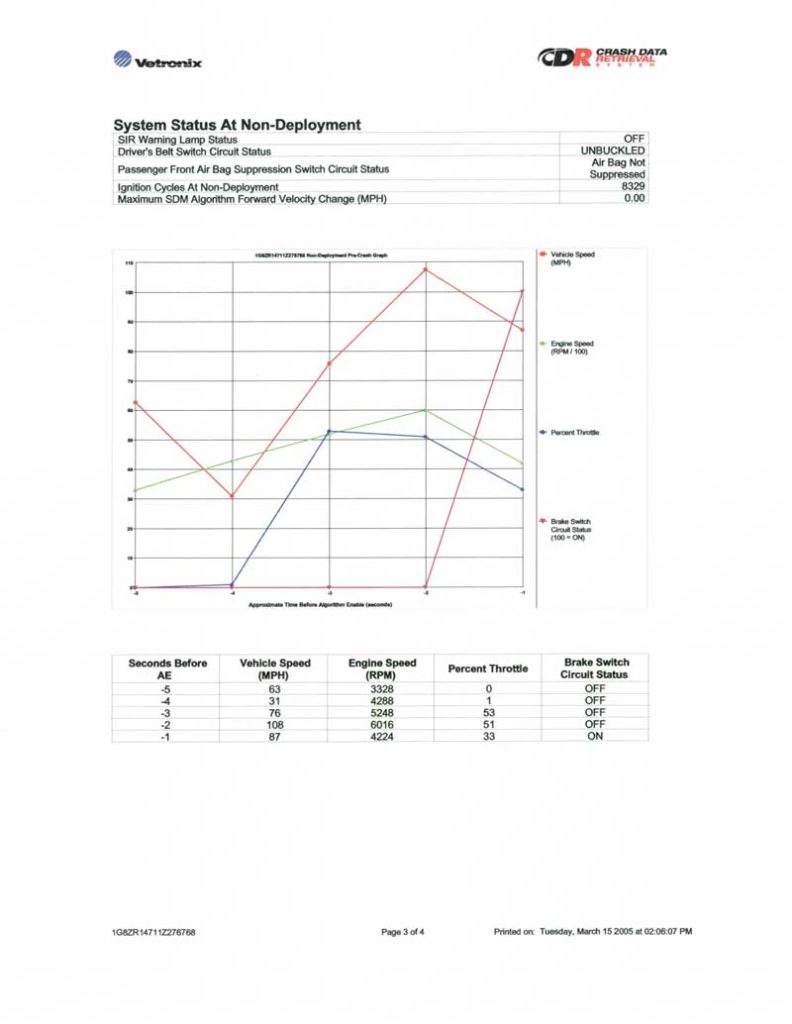In many automobile accident cases the question as to whether one of the occupants is wearing a seat belt comes into question. Oftentimes, the investigating agency charged with investigating the accident either fails to review all of the evidence or does not properly interpret the evidence. This is especially true when an individual has lost consciousness or has left the vehicle prior to the investigating agency arriving.
The determination whether a seat belt was fully functional and operational can be an expensive proposition. Retaining an expert to inspect the vehicle and restraint system can cost as much as $10,000.
The practitioner needs to be aware that in many situations the determination of seat belt usage can be as simple as downloading data. Technology developed since the mid-1990s, allows for the practitioner, for a reasonable cost, to download information from the Restraint Control Module installed in most vehicles that can answer the question of belt usage. The restraint control module (or “RCM”) will store, amongst other data, information regarding the use or non-use of the seat belt. The RCM reacts to the forces experienced by the vehicle during a collision. To determine whether or not an occupant has been wearing a seat belt, some type of deceleration force, in the longitudinal direction of travel must have occurred. This can be either brake application or impact. The RCM will also provide information regarding the engine RPMs, percentage of power of the engine, brake application and vehicle speed.
The RCM can be downloaded for as little at $1,500 for the vehicles that have them. Today most manufacturers black boxes can be downloaded. Certain manufacturers still maintain the proprietary code. It is important to properly safeguard against any deletion of data. In most product liability cases cases the adverse party should be advised that you are conducting the download
The above graph details the information that is provided by the RCM. The graph is from a 2001 GM model. In this case, our occupant was ejected and the question was whether or not he was wearing his seat belt and failure of the side curtain airbag to deploy. At first glance, the data leads you to believe that the vehicle was traveling at approximately 100 mph (red line). That did not correlate with the physical evidence or the engine power output detailed in the graph (green line). Further review by our expert determined that the reason for the high-speed indication was due to rotational velocities of the vehicle experienced while spinning down the roadway. The acceleratometers found in the RCM gave an artificial indication of speed due to this phenomenon. Please be aware of this type of potential “false read”. Always verify results with the physical evidence.
A local expert, Rick Galdos, Ph.D. (813-654-0172), has both the hardware and software to download this data in these particular automobiles and can provide you with this information relatively inexpensively.
Omar F. Medina is a nationally recognized attorney practicing in the area of automotive crash worthiness and products liability cases. In 2002 Mr. Medina received ATLA’s Stephen J. Sharp Public Service Award, for his work in the Ford/Firestone litigation. Mr. Medina principal office is in Tampa, Florida.

